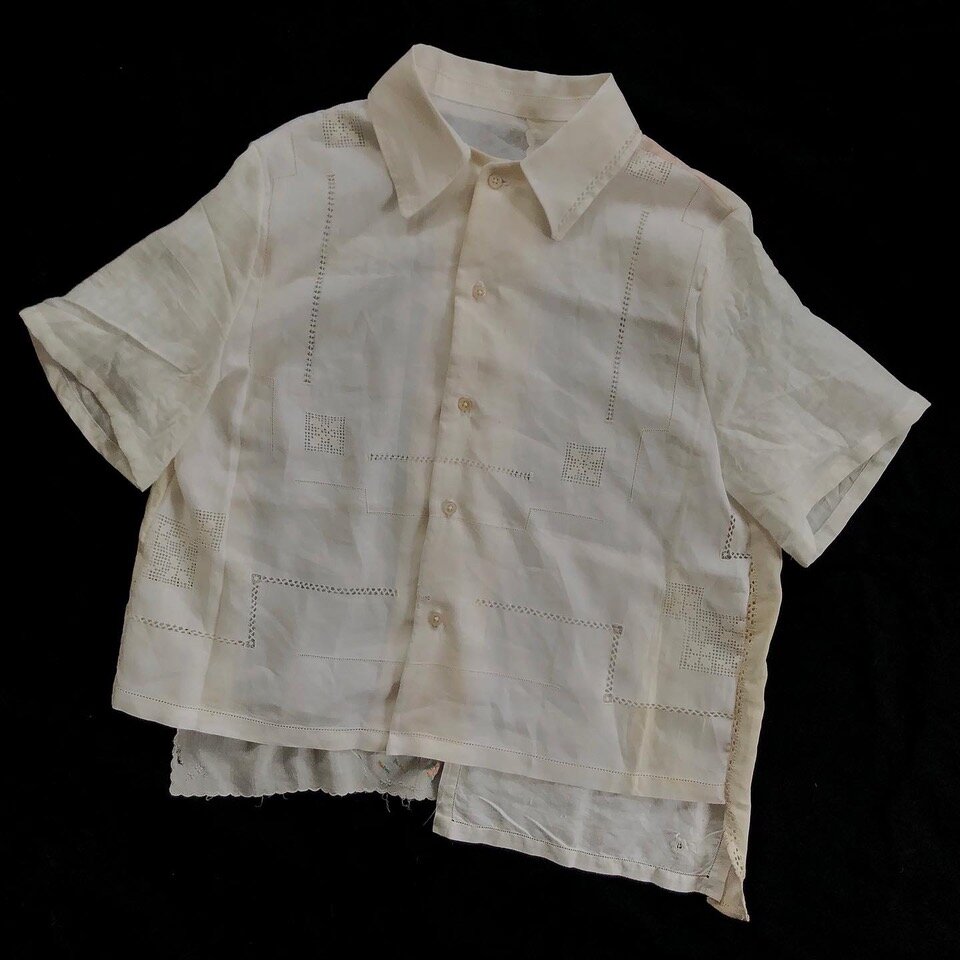Wearable Stories
An Interview with Onea Engel-Bradley
Onea Engel-Bradley
Onea Engel-Bradley taught herself how to sew in her Berlin apartment, “on a 1970s German sewing machine my landlady lent me.” She is currently living in her Brooklyn apartment, and we spoke briefly over e-mail.
left to her own devices.
Onea studied political theory, studio arts and poetry at Hampshire College, in Massachusetts. After graduating, she worked in the fashion industry as a designer for small brands. When the company she was working for “folded over under the weight of COVID,” she explains “it left me to my own devices, those devices being the skills I had learned in the industry and the creative energy I still, very much, had.” She started her own clothing brand, Silphium, where she is currently selling handmade pants, dresses, and shirts from vintage linen and antique fabrics. Each garment she produces feels like it has its own story to tell, and I imagine the many stories and histories the clothing will continue to carry as it moves on bodies into the world.
When Onea was at Hampshire, she had an installation titled Every Piece Apart where she researched her own family histories in relation to textiles. The photos on her site show dresses and fabrics hanging from walls, like ghosts floating from above. She wrote: “interested in our abiding relationship to things and their histories, I collected, mended and designed works out of recycled and antique materials.”
wanted to try and physically render what memory might look like and feel like.
These ideas on memory and familial histories continue to follow her, “I tend to work with vintage or antique fabrics and linens, and sometimes their composition alone is enough inspiration,” she wrote to me. Her clothes do indeed feel like sculptures, archives, and personal stories. During the beginning of her discovering the sewing machine as a medium, she writes, “I was interested in utilizing sewing as a means to articulate some of the ideas surrounding my artistic practice. I got swept up in philosophical discussions of memory, how we understand memory, the connection between narrative and memory, etc. And I wanted to try and physically render what memory might look like, feel like. I think producing wearable objects felt natural; I’ve always loved fashion and have been very stubborn in my representation of personal style. I loved the idea that what I made would not live, simply, on a wall, but would carry on a life of its own, on someone’s back, in someone’s closet.”
I send Onea a poem by Esther Jansma called Archaeology, which speaks to clothes as objects of memory, and I reflected on it recently in terms of the Covid Pandemic. Part of the poem goes: “We are already there / In the today that existed before today / If we can only preserve ourselves in the now / By continually re-inventing ourselves in the now / Then preferably simply by means of clothing.” If Onea’s clothes are wearable fragments of memories and histories, then she is also constantly preserving and archiving the present. By giving new lives to vintage napkins and linens, and transforming them into an item someone can hold closely onto their bodies and into their own memory-filled lives, she is igniting a beautiful cycle of storytelling through fashion. “Everything gets you somewhere new… that’s some simplified version of a phrase my mother raised me on. As someone who has no technical training in fabrication, every day I’m learning something new and challenging myself, and getting frustrated until I pick up the pieces again.”
“I don’t know that I know exactly what I want, or even have one ‘growing dream’, I want to be a lot of things and do a lot of things, and I’m hoping that in process of doing, I will get to the next phase, the next experience, and so on.”
While processing Onea’s words, I looked out my window. In trees and flowers in the park across the street, in the arches of the windows next to mine and the light floating in, I thought about all the memories unfolding in the fabrics of our lives.
Words by Mána Taylor Hjörleifsdóttir.










